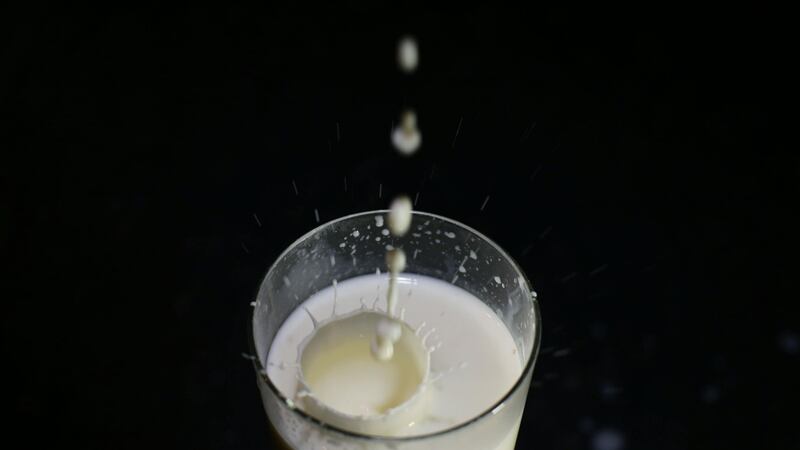Prehistoric people in Europe were drinking milk thousands of years before humans evolved the genetic ability to digest lactose, new research suggests.
Lactose is a type of sugar found in milk, and until now it had been assumed that lactose tolerance emerged because it allowed people to consume more milk and dairy products.
But the new research indicates that famine and exposure to infectious disease best explains the evolution of our ability to consume milk and other non-fermented dairy products.
Most European adults today can drink milk without discomfort, but it is thought that two thirds of adults in the world – and almost all adults 5,000 years ago – face problems if they drink too much milk.
This is because if people cannot digest lactose it travels to the large intestine where it can cause cramps, diarrhoea and flatulence – known as lactose intolerance.
However, the new research suggests these effects are rare in the UK today.
The ability to digest lactose is known as lactase persistence.
Researchers say their findings suggest that the consequences of milk drinking for healthy people who cannot digest it are minor.
Professor George Davey Smith, director of the MRC Integrative Epidemiology Unit at the University of Bristol and a co-author of the study, said: “To digest lactose we need to produce the enzyme lactase in our gut.
“Almost all babies produce lactase, but in the majority of people globally that production declines rapidly between weaning and adolescence.
“However, a genetic trait called lactase persistence has evolved multiple times over the last 10,000 years and spread in various milk-drinking populations in Europe, central and southern Asia, the Middle East and Africa.
“Today, around one third of adults in the world are lactase persistent.”

Researchers led by scientists from the University of Bristol and University College London (UCL) alongside collaborators from 20 other countries mapped pre-historic patterns of milk use over the last 9,000 years using a variety of data sources.
They were able to show that the lactase persistence genetic trait was not common until around 1,000 BC, nearly 4,000 years after it was first detected around 4,700–4,600 BC.
In a bid to find out how this ability evolved, Professor Richard Evershed, the study’s lead from Bristol’s School of Chemistry, assembled a database of nearly 7,000 organic animal fat residues from 13,181 fragments of pottery from 554 archaeological sites to find out where and when people were consuming milk.
He found that milk was used extensively in European prehistory, dating from the earliest farming nearly 9,000 years ago.
But according to the study, its use increased and decreased in different regions at different times.
The researchers also probed the UK Biobank study data, and found there were only slight differences in milk-drinking behaviour between those able to digest lactose, and those not able to (lactase non-persistent).
Critically, they say, the large majority of people who could not experienced no short or long-term negative health effects when they consumed milk.
Professor Davey Smith added: “Our findings show milk use was widespread in Europe for at least 9,000 years, and healthy humans, even those who are not lactase persistent, could happily consume milk without getting ill.
“However, drinking milk in lactase non-persistent individuals does lead to a high concentration of lactose in the intestine, which can draw fluid into the colon, and dehydration can result when this is combined with diarrhoeal disease.
“If you are healthy and lactase non-persistent, and you drink lots of milk, you may experience some discomfort, but you are not going to die of it.
“However, if you are severely malnourished and have diarrhoea, then you’ve got life-threatening problems.
“When their crops failed, prehistoric people would have been more likely to consume unfermented high-lactose milk – exactly when they shouldn’t.”
The researchers tested this idea by looking at indicators of past famine and pathogen exposure.
They concluded: “Our study demonstrates how, in later prehistory, as populations and settlement sizes grew, human health would have been increasingly impacted by poor sanitation and increasing diarrhoeal diseases, especially those of animal origin.
“Under these conditions consuming milk would have resulted in increasing death rates, with individuals lacking lactase persistence being especially vulnerable.
“This situation would have been further exacerbated under famine conditions, when disease and malnutrition rates are increased.
“This would lead to individuals who did not carry a copy of the lactase persistence gene variant being more likely to die before or during their reproductive years, which would push the population prevalence of lactase persistence up.
“It seems the same factors that influence human mortality today drove the evolution of this amazing gene through prehistory.”
The findings are published in the Nature journal.








